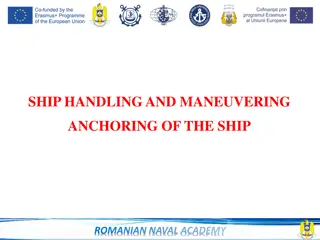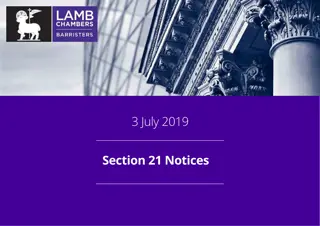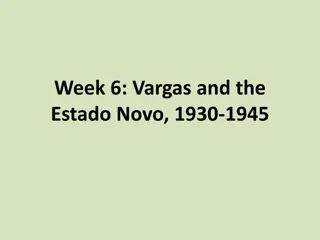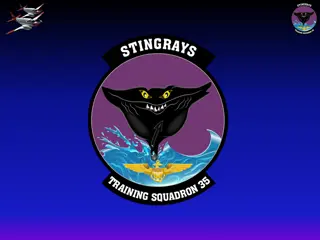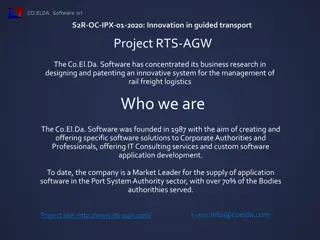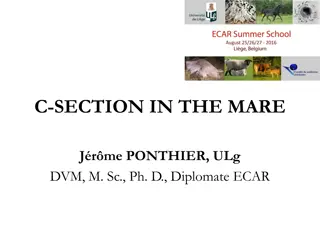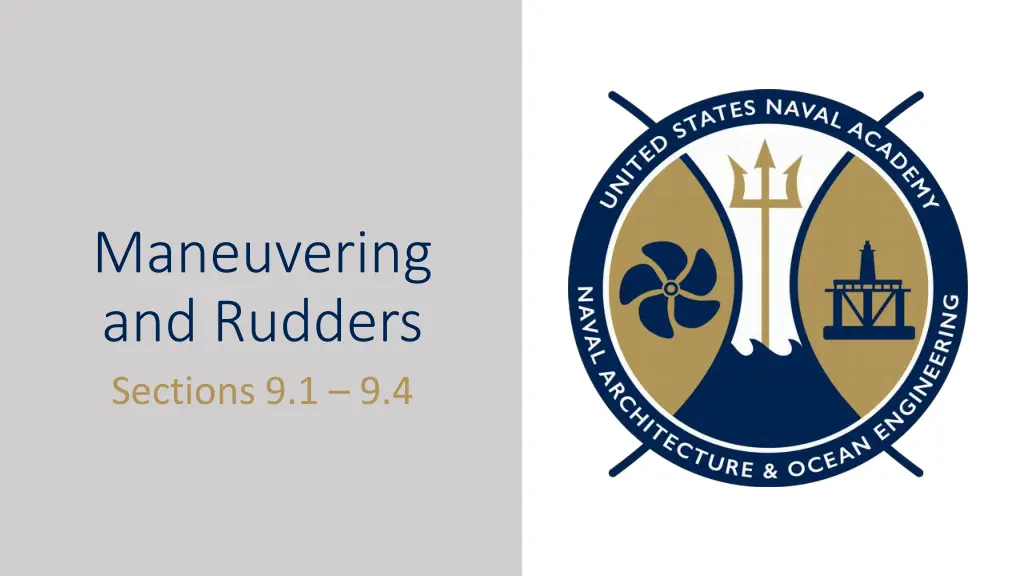
Understanding Ship Maneuverability and Rudder Performance
Explore the importance of maneuverability in ship operations, focusing on directional stability, response, and slow-speed maneuverability. Learn about the factors affecting ship turning ability and how rudder performance plays a crucial role in maintaining course control and stability.
Download Presentation

Please find below an Image/Link to download the presentation.
The content on the website is provided AS IS for your information and personal use only. It may not be sold, licensed, or shared on other websites without obtaining consent from the author. If you encounter any issues during the download, it is possible that the publisher has removed the file from their server.
You are allowed to download the files provided on this website for personal or commercial use, subject to the condition that they are used lawfully. All files are the property of their respective owners.
The content on the website is provided AS IS for your information and personal use only. It may not be sold, licensed, or shared on other websites without obtaining consent from the author.
E N D
Presentation Transcript
Maneuvering and Rudders Sections 9.1 9.4
Maneuverability The quality of being easy to move or steer while in motion. Important when: Station keeping Underway Replenishment (UNREP) Docking and Undocking Dodging incoming weapons or other ships Predicted by: Equations of Motion Tank Models Always Verified by Sea Trials Gets accurate information for specific ship Same procedure for aircraft
Maneuverability The maneuverability performance of the rudder can be described by three broad categories: 1. Directional Stability 2. Response 3. Slow Speed Maneuverability
Directional Stability The ability to continue to travel in a straight line Rudder at midships No external pressure acting on the vessel or rudder Controls Fixed Straight Line Stability A condition rarely achieved Any condition other than heading directly into the seas will alter the ability to continue straight
Directional Stability Longer ships are more likely to possess straight line stability Short beamy ships, like tugs, small sport craft, have poor straight line stability To improve this, can increase deadwood of the ship This is the part of the hull that exists in front of the rudder, an extension of the ship Acts like the feathers on an arrow
Directional Stability Straight Line Stability - The ship responds to the disturbance by steadying on some new course.
Turn Response The ability to turn the ship when the rudder is applied, and to turn the ship to the desired heading with minimal overshoot When applied, the rudder must be able to change the orientation of the ship in a minimum set time. The ship must be change course without going beyond the desired heading. Responsiveness is determined by the ship s mission A combatant needs high maneuverability A merchant ship needs much less than a combatant
Turn Response We want quick response time to helm commands with minimum course overshoot. Rudder response depends on rudder dimensions, rudder angle, and flow speed. Directly conflicts with controls fixed straight line stability . Determined during sea trials and tank tests.
Turn Response Factors in Turn Response: 1. Rudder Dimensions Limited by space. Larger rudder are means more maneuverability, but more drag. 2. Rudder Angle Level of response depends on rudder angle ordered and available range of rudder angles. 3. Ship Speed Determines level of water flow past control surface. Bernoulli s! 4. Coxswain Ability
Slow Speed Maneuverability The ability to maneuver at slow speeds < 5 kts A ship requires some level of maneuverability at low speeds In canals Approaching harbor entries But as speed drops, so too does rudder control! Typically requires some additional methods to aid turning and positioning in slow speeds
Slow Speed Maneuverability Must be able to maintain steerageway even at slow speeds. Directional control systems used at slower speeds. Position rudder behind prop (thrust directly on rudder). Increases water flow over the rudder Twin screws (twist ship). Lateral/bow thrusters (research vessels, tugs, merchants and some amphibious ships). Rotational thrusters (specialized platforms including cruise ships and some submarines).
Maneuverability Requirements Maneuverability Trade-Off For a given rudder size and shape, straight line stability (tendency to stay in a straight line) & maneuverability (ability to easily depart from a straight line) oppose one another Large rudders can help both but increase drag It is not possible to independently optimize each (e.g. good response conflicts with straight line directional stability)!
Rudders Root Chord Stock Span Water Flow Trailing Edge Leading Edge Tip Chord
Rudders - Dimensions Chord: Horizontal distance from leading to trailing edge Limited by propeller and edge of stern Span: Vertical distance from root to tip Limited by local hull bottom and ship baseline Semi-Balanced Spade Rudder Span Chord
Rudder Balance Center of Pressure vs. Position of Rudder Stock Vertically aligned: Fully Balanced Rudder Stock at Leading Edge: Unbalanced Semi-Balanced Less operating torque than unbalanced Returns to centerline on failure of rudder control
Rudder Balance - Balanced Rudder The rudder stock is aligned with the center of pressure (near the center of the rudder), requiring less force to turn it
Rudder Balance Unbalanced Rudder The rudder stock is at the leading edge of the rudder
Rudder Balance Semi Balanced The rudder stock is not aligned with the center of pressure, but it is aft of the leading edge.
Rudder Performance Rudder doesn t turn ship, hydrodynamics of water flow past ship is reason for it turning. Flow across the rudder provides LIFT. Ship turns by moment produced about the Longitudinal Center of Pressure (LCP) (not LCG!) Center of Pressure
Rudder Performance Stages of a Ship Turn 1. Rudder midships Water Flow 2. Rudder is turned Water Flow 3. Ship orients itself at the desired angle to oncoming seas Water Flow Hull Lift
Rudder Performance THE RUDDER DOES NOT MAKE THE SHIP TURN! What it DOES do is orient the ship at an angle to the direction of travel The pressure on the side of the hull causes the ship to turn (it acts like a flap on an aircraft wing) Rudder Action: Kicks stern in opposite to desired direction Ship s angle to flow causes a hull lift force that changes the course
Rudder Stall Just like an aircraft wing, if the angle of the rudder is too great, the high and lower pressure areas on the rudder will disrupt water flow over the surface Beyond 45 , the rudder will produce no lift, and so will not effectively orient the ship for turning Rudder will create turbulence and drag with no effect on ability to turn Navy ships typically limit the angle range to about 35
Maneuverability Good directional stability and ship turn response conflict, so compromise involved. Increased rudder area improves turn response and usually improves directional stability. Theory and design use many assumptions so empirical testing with models is required. True test of ship s maneuverability characteristics is at Sea Trials.
Knowledge Check Of what is a ship s directional stability a measure? Which of the following helps an operator maneuver the ship at slow speeds (<5kts)? Fin stabilizers Deadwood Rotational thrusters Bilge keels Small rudder Large rudder What is the true test of a ship s maneuverability characteristics? 2 Prop Shafts Bow thruster
Knowledge Check - Answers Of what is a ship s directional stability a measure? Ability to steam in a straight line with the rudder amidships Which of the following helps an operator maneuver the ship at slow speeds (<5kts)? Fin stabilizers Deadwood Rotational thrusters Bilge keels Small rudder Large rudder What is the true test of a ship s maneuverability characteristics? 2 Prop Shafts Bow thruster
Knowledge Check - Answers Of what is a ship s directional stability a measure? Ability to steam in a straight line with the rudder amidships Which of the following helps an operator maneuver the ship at slow speeds (<5kts)? Fin stabilizers Deadwood Rotational thrusters Bilge keels Small rudder Large rudder What is the true test of a ship s maneuverability characteristics? Sea Trials! ( not the thing plebes do every May ) 2 Prop Shafts Bow thruster


